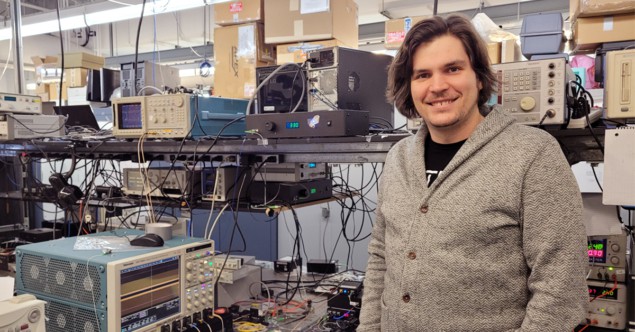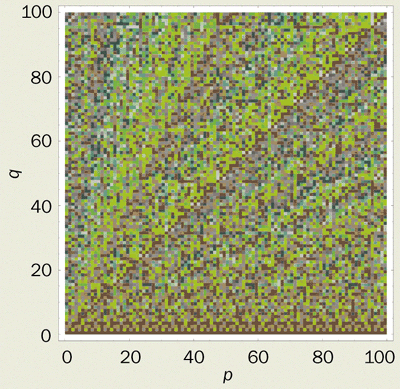
A technique that can amplify weak optical signals, while simultaneously reducing noise has been developed by researchers in Canada. By exploiting the Talbot effect, the team showed how arbitrarily-shaped signals can be reliably detected, even when buried in background noise. The research was led by José Azaña and Benjamin Crockett at Quebec’s National Institute of Scientific Research.
The ability to detect weak, noisy optical signals is important in many aspects of science and technology. These include long-range telecommunications, where signals are weakened as they propagate through optical fibres; and biomedical imaging, where weak light beams are necessary to avoid damage to delicate living tissues.
Weak signals can be enhanced using active amplification, but this worsens the signal to noise ratio. Passive methods such as filtering-out noise tend to also attenuate the signal of interest, and do not work for signal bandwidths narrower than a few gigahertz.
Self-imaging effect
To address these problems, Azaña’s team turned to a passive amplification technique derived from the Talbot self-imaging effect, which occurs when light passes through an optical grating. It is a diffraction effect that can be used to combine successive light pulses by “stacking” them on top of each other – creating more powerful pulses. So far, however, this technique has been incompatible with the non-periodic, arbitrary waveforms found in most practical optical signals.
Building on previous work, Azaña and colleagues used a more advanced form of the Talbot set-up to passively redistribute the energy of a weak signal into a high-intensity pulse. Crucially, this could be done without distorting the waveforms of the signals. The technique also reduced the overall signal-to-noise ratio. This enabled the researchers to amplify non-periodic signals by a factor of more than 100, while reducing relative noise in the measured signal.

Quantum carpets, carpets of light
Such a powerful approach could allow light sensors to pick up optical signals well below their current detection thresholds – signals that are buried deep within a noisy background. Furthermore, the technique is compatible with bandwidths spanning several orders of magnitude, from kilohertz to gigahertz. This enabled the team to amplify a diverse range of technologically relevant optical signals from ultranarrowband waveforms to broadband signals.
Azaña’s team envisage a wide array of potential applications for their approach. They hope that it could be adapted to convey 2D and 3D images – with promising potential uses in fields including astronomy, photography and holography. With further improvements, their Talbot-effect concept could also be adapted to amplify noisy signals carried by other wave types. These may include additional electromagnetic wavelengths, sound and potentially even quantum matter waves.
The research is described in Optica.



